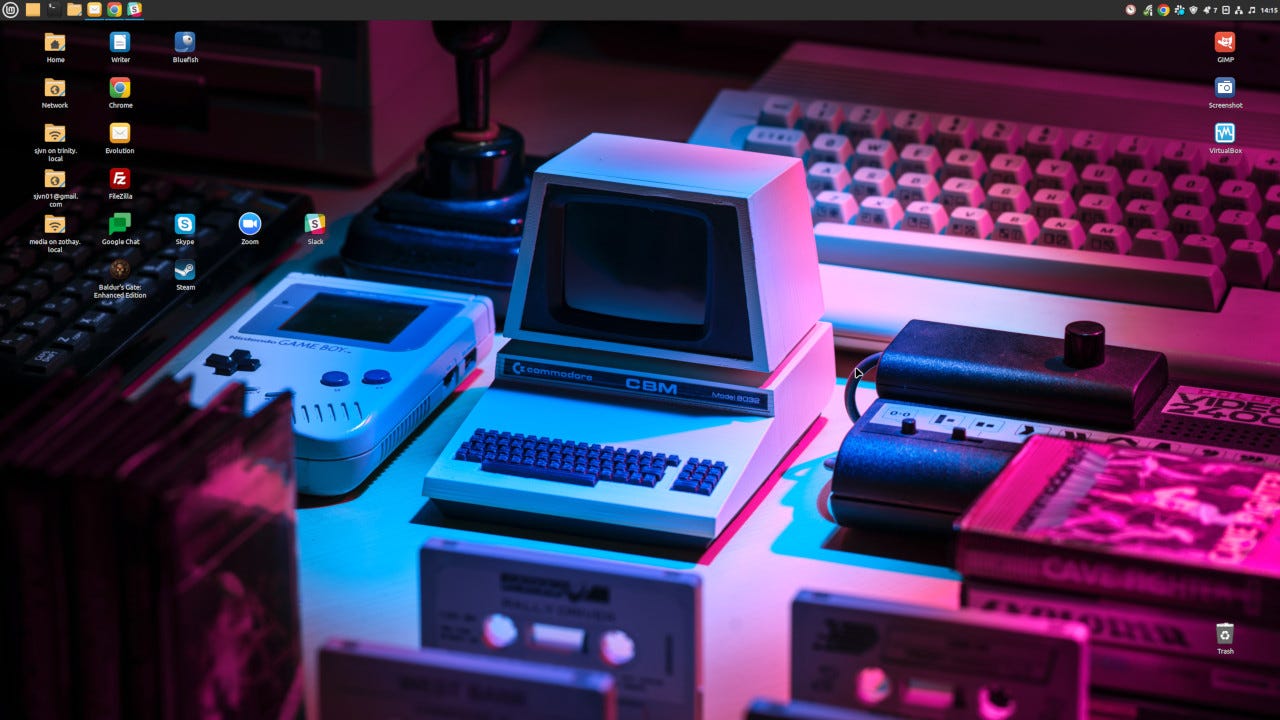Linux Mint 21.1: The better-than-ever Linux desktop

You can keep your Windows 11 and macOS Ventura on your PCs. On my desktop, what I want is open-source Linux. In particular, I want Linux Mint. Why? Because, it's free, easy to use, and far more secure than its proprietary rivals.
The latest version, Linux Mint 21.1, Vera, is better than ever. If you don't know it, let me introduce you.
Also: 2022 was secretly the year of Chromebooks. Here's why
Linux Mint 21.1 is a comprehensive desktop operating system that includes everything you need for home and office work. It comes with LibreOffice 7.3.7 for office productivity, Firefox 108.0.1 for web browsing, Thunderbird 102.4.2 for email and calendering, and GIMP 2.10.30 for graphics editing. None of this will cost you a thin dime.
See also
Mint gives you your choice of three interfaces: Cinnamon 5.6, MATE, and Xfce. For me, the Cinnamon interface is the easiest to use. I recommend it to anyone who wants to move from the Mac and Windows world to Linux. It's very simple to pick up.
Experienced Cinnamon users will notice that the default theme features more vibrant colors. It also uses the blue Aqua theme by default, instead of the more familiar mint-green color. Rather use the old one? No problem. Choose the "Mint-Y-Legacy" option in the theme options, and you're good to go. You'll find this and all the other desktop customization choices under the System Settings panel.
Also: How I revived three ancient computers with ChromeOS Flex
The desktop itself has also been cleaned up. Now, by default, there are far fewer icons. The Home, Computer, Trash, and Network icons are all missing. If, like me, you still like icons, you can easily add them again via the System Settings panel. Mint gives you all the control you could ever want over your desktop to set it up in whatever way makes you happy.
The interface is also just snappier. There have been many changes under the hood to make the display much faster. I noticed this immediately on my main desktop. The new Mint ran like a top on my 2020 Dell Precision 3451. This PC is powered by an Intel 8-core 3GHz i7-9700 CPU. It also includes 16GB of RAM and a 512GB SSD.
This is far more computer than Mint needs. Linux Mint will run on pretty much any computer. If your PC has 2GBs of RAM and 100GB, any graphics card, and a monitor that supports a 1024×768 resolution, you're good to go. If you're not sure if you want to try Mint, you can literally grab pretty much any PC from a second-hand store to play with it.
This version of Mint is built on top of Ubuntu 22.04, known as Jammy Jellyfish. From it, it inherits many business-friendly features, such as full support for Active Directory (AD) with Advanced Group Policy Object. So if you want to run Mint on a business network with a Windows 2012 or newer AD Domain Controller, you're ready for work.
If you elect to do that, it's also handy to know that Mint 21.1 is a long-term support (LTS) release. It will be supported for five years, that is, until 2027.
Also: The 3 tiers of Linux distribution difficulty
It also uses the Linux 5.15 kernel. This comes with such business features as improved support for the Windows NTFS file system and an in-kernel SMB 3.0 file server. This also improves its integration with Windows-based systems and file servers.
Because of this, Mint also now includes the Blueman Bluetooth stack. This improves Mint's Bluetooth device support for keyboards, mice, and smartphones.
The latest Process Monitor alerts you when any significant actions, such as backups, are happening in the background. The default use of the Internet Printing Protocol (IPP) allows for easy printer and scanner setup without needing drivers, although support for other drivers is also available.
Also: How to create hidden files in Linux
Regarding drivers, the Drive Manager no longer requires the root user password. Packagekit can also purge packages, that is, not only remove them but also remove their configuration files. That means the driver manager now purges removed drivers. This fixes a niche issue with the ever-annoying Linux NVIDIA drivers when switching between different driver versions.
Mint also now fully supports Flatpak program installation from the Software Manager and Update Manager. Flatpak allows developers to easily enable users to install containerized programs on their desktops. Both software installation front-ends make it easy to see the difference between a conventional and a Flatpak installation.
Also: What are Flatpak and Snap and why are they so important to Linux?
Mint's leadership has never cottoned up to the similar Snapcraft program manager. If you want to use snaps anyway -- like I do -- take the following steps from the shell.
$ sudo rm /etc/apt/preferences.d/nosnap.pref
$ apt update
$ apt install snapd
And, while the Snap store won't be integrated with the Software and Update Manager, you can install Snap programs.
To install Linux Mint 21.1, you can download it now. However, if you're already running Linux Mint 21, it's trivial to upgrade to the latest version. With my 1 Gigabit down fiber connection, it took me less than 15 minutes.
So, if you want a holiday Linux project, or you're ready to kiss Windows goodbye, give Mint a try. You'll be glad you did.
Related Stories:
